Chasing Whales Through Time
25:57 minutes
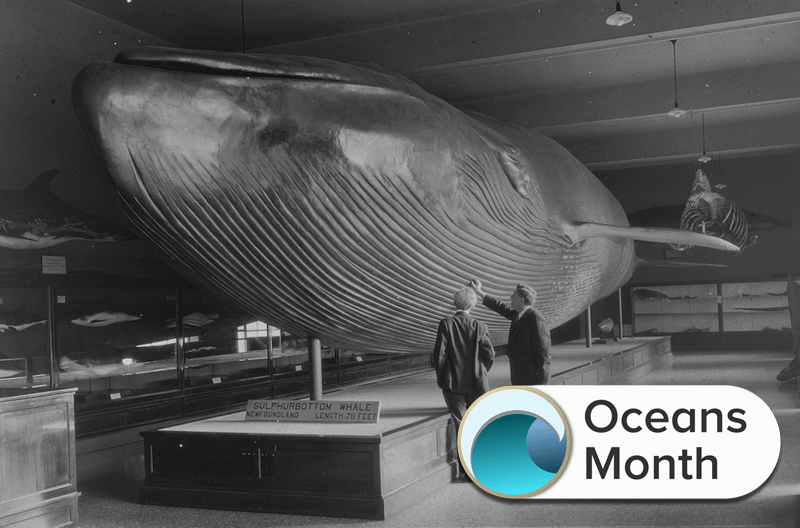
This is a part of Oceans Month, where we explore the science throughout the world’s oceans and meet the people who study them. Want to dive in with us? Find all of our stories here.
Whales are majestic, awe-inspiring animals. Some species can reach up to 150 tons and take in a living room-sized volume of water in one gulp. They can even dive thousands of feet into the ocean while holding their breath all the way down. But these traits are also why whales are a mystery to scientists. It’s hard to imagine that the earliest ancestors of these graceful creatures of the deep were four-legged dog-like animals that lived on land.
In his book Spying on Whales: The Past, Present, and Future of Earth’s Most Awesome Creatures, paleontologist Nick Pyenson examines the fascinating features of these animals—from their enormous size, echolocation abilities, and specialized feeding behaviors—and how they can be used to piece together the evolutionary story of whales.
[Meet the farmers who want to make kelp the new kale.]
Read an excerpt of Pyenson’s new book here and explore photos of him and his team out in the field below. Plus, journey alongside Pyenson and his crew of paleontologists during a 2011 excavation, when a highway expansion in Chile unearthed a whale graveyard.
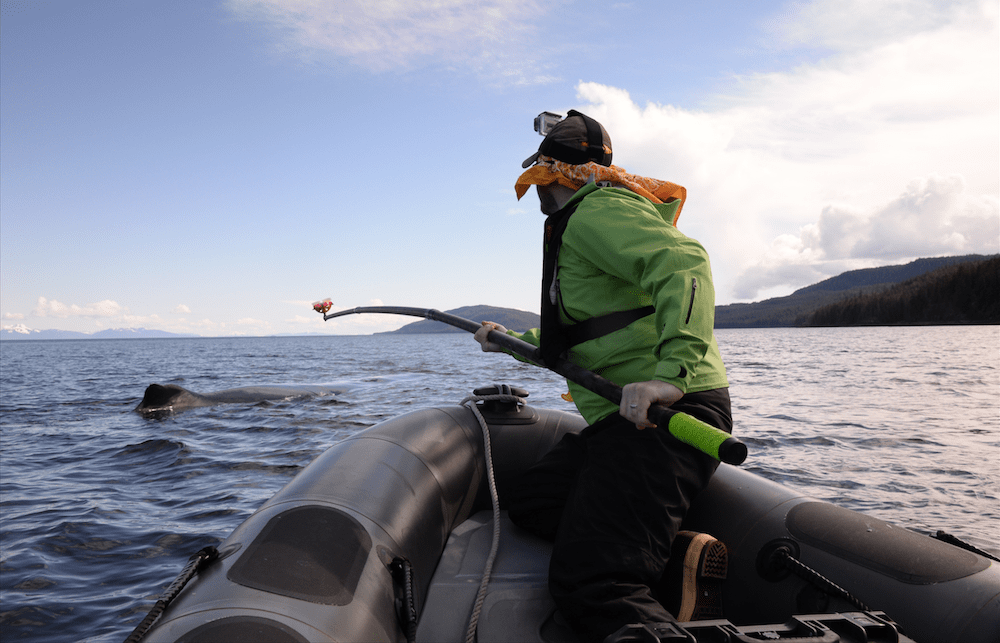
[Can geometry root out gerrymandering?]
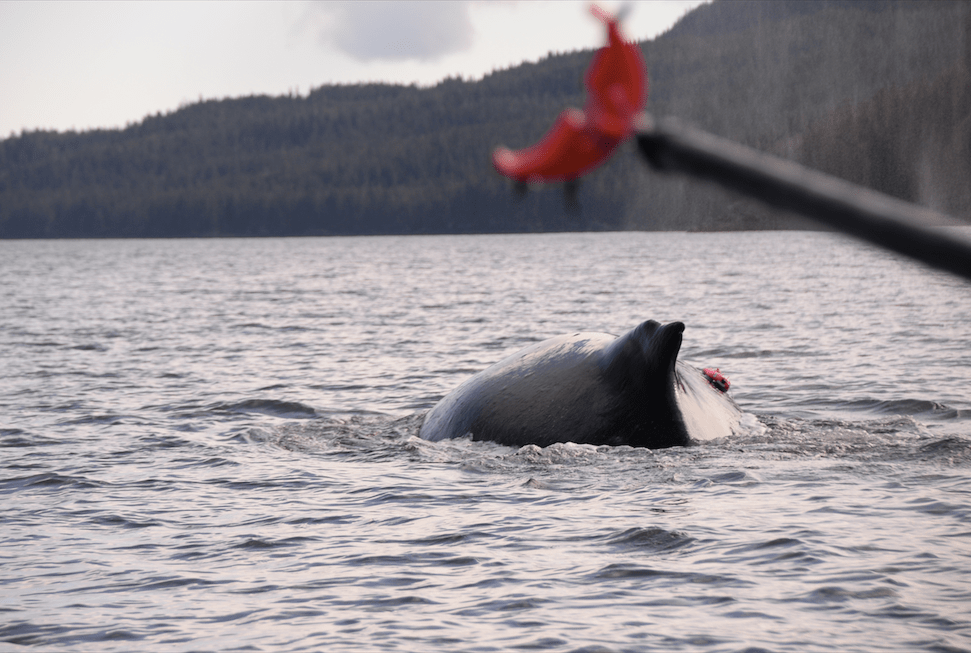
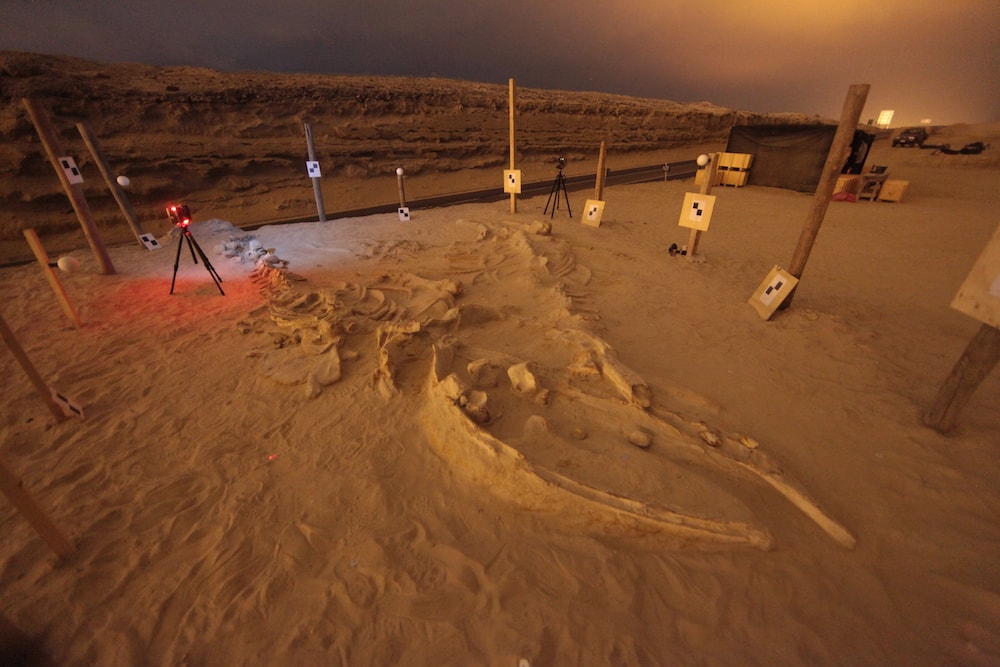
[Meet the seamstress who solved the mysteries of the argonaut shell.]
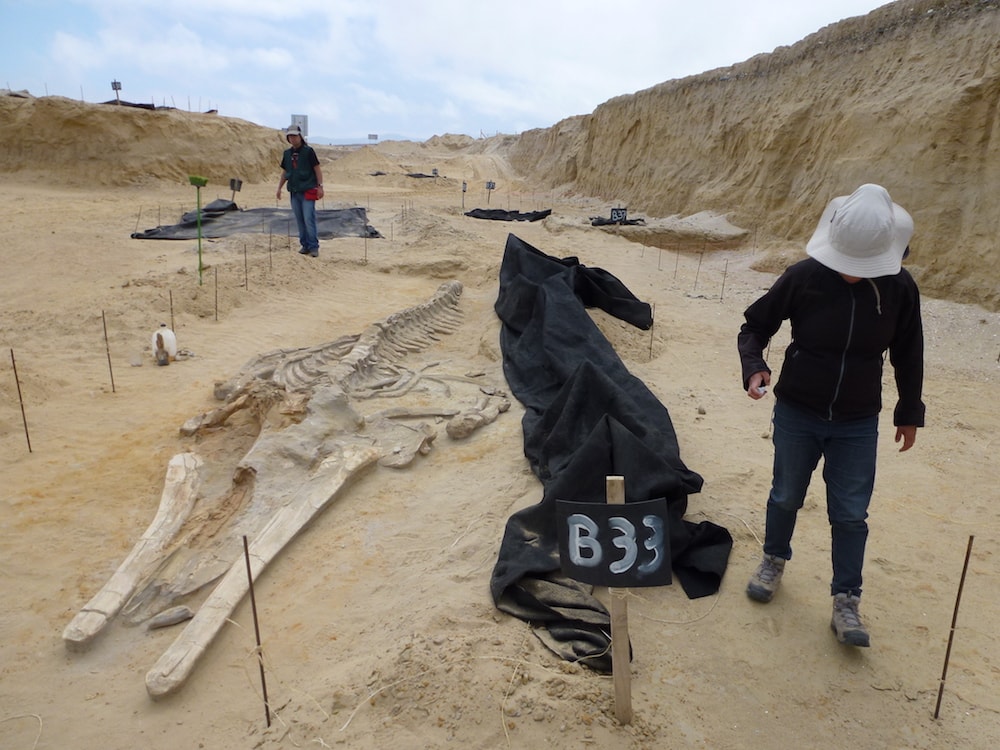
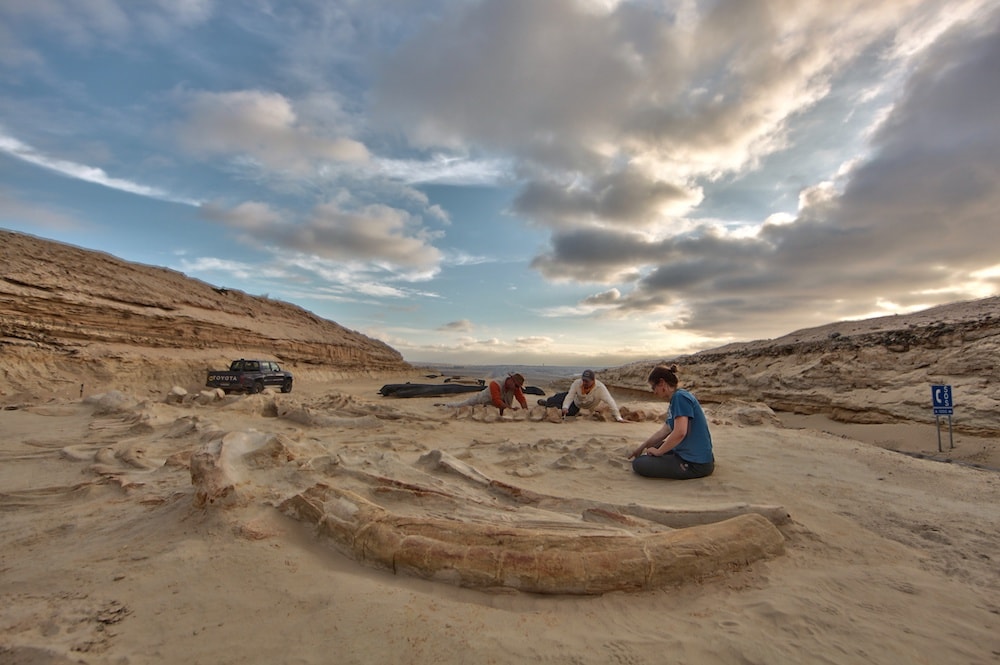
Nick Pyenson is author of Spying on Whales: The Past, Present, and Future of Earth’s Most Awesome Creatures (Viking, 2018), and curator of Fossil Marine Mammals at the Smithsonian Institution’s National Museum of Natural History in Washington, D.C..
IRA FLATOW: This is Science Friday. I’m Ira Flatow. With the holiday weekend coming up, maybe you’re going to do a little whale watching. Is that on your agenda? Because, you know, it’s very exciting. People love to go watch for whales because they’re majestic, and awe-inspiring animals, and some of the largest creatures on Earth, reaching up to 150 tons. And listen to this. They take in a living-room-sized volume of water in one gulp.
They can dive thousands of feet into the ocean while holding their breath all the way down. But all of these details also make their existence improbable according to my next guest, because whales, after all, are mammals like us. And they evolved from a four-legged, dog-like animal that roamed around on the land. So how did all this happen? Nick Pyenson chases the story of whale evolution in his new book.
He’s the author of Spying on Whales– The Past, Present, and Future of Earth’s Most Awesome Creatures. He’s also the curator of fossil marine mammals at the National Museum of Natural History in Washington DC. Welcome to Science Friday.
NICK PYENSON: Hi, Ira. Happy to be here.
IRA FLATOW: Thank you. A great book. It’s a terrific read. I learned so much from this book. You said that you’ve never had a– you’ve never been a whale-hugger, so to speak– that whales aren’t your destiny. How did you get involved in this?
NICK PYENSON: Yeah. So I think for a lot of people, how they get interested in different kinds of science is a bit of a chronicle of happenstance and unique opportunities. I was always interested in evolution, and I was always attracted to fossils and certainly the big skeletons of dinosaurs that you see in museums. I just thought the material evidence for evolution was really compelling.
And I had the right opportunities at the right time, especially in college, that exposed me to knowing a bit more about the fossil record of whales. And that got me really excited about knowing about evolution through this kind of vehicle– whales. And I just– I’ve kind of kept with it.
IRA FLATOW: Was there– was there like a Jurassic Park moment, where you saw something, and said, oh, I want to do that?
NICK PYENSON: You know, I think– not for me at least. It was small moments. One was finding a dead dolphin on a beach once on a college ecology field trip. And watching it decay was actually fascinating for me. I mean, I didn’t love it, but it was still– it made me start thinking about how the remains of organisms enter the fossil record. How do we get fossils in the first place?
And then I was also fortunate to also get to do some real research on CT scans of fossil skulls belonging to whales to try to understand how their brains evolved through time– whales being, of course, some of the more fascinating creatures to study in terms of their behavior, which is really sophisticated.
IRA FLATOW: Our number, 844-724-8255, if you’d like to talk about whales, and then there’s a lot to talk about– 844-724-8255. You can also tweet us, @SciFri. You know, it’s so fascinating, the history of whales because, as you write in your book, whales started out, evolutionarily speaking, as sort of like big dogs on land, right?
NICK PYENSON: Right, right.
IRA FLATOW: How did they get from there to there?
NICK PYENSON: Right, so if we look at– let’s just take DNA. Assume we don’t know anything about the fossil record, and we just try to figure out, who are whales most related to among all the species, mammals on the planet, if we go with our observations and recognize that whales are mammals in the first place? And I’d say that they’re hardly like the mammals that we see on a daily basis.
You have to watch them for more than a few minutes to recognize that they breathe air, that they nurse their young. And so once you realize that– then if you look at their DNA, they’re most closely related to even-toed, hoofed mammals– so cows, deer, pigs, camels. Whales are really different from their nearest relatives. And what that tells us is that there had to have been a lot of evolutionary change in their history.
And that’s what– the way that we know about that directly is through their early evolutionary history that’s in the fossil record. So we’re fortunate to actually have these fossils, early on, that show us how they transformed from land ancestry into something a bit more aquatic.
IRA FLATOW: And so how– did they start out with living by the shore, and then their feet, legs changed because they were getting– spending more and more time in the water? What happened?
NICK PYENSON: Right, so we see this in– if we look at the family tree of whales, and if we include all the fossil relatives, especially for the earliest whales, and these are– if you looked at these fossils– and you can actually walk into the Smithsonian’s Natural History Museum. In the Sant Ocean Hall, we have this great exhibit of whale evolution. And you can see what some of these earliest whales look like.
They have a pelvis that is tightly sutured to the backbone. They have weight-bearing limbs. They have a skull that looks more like the skull of a land mammal than it does like any kind of whale that we see today. And through time– as we go up in the rock sequence, we’re getting younger in time. We’re fortunate in having found fossils that show us the transformations that happen as we get into whales that evolved more and more to life in the water than life on land.
Now, why that is? There’s potentially 18 different reasons why that could be. And some of them are testable. Some of them aren’t. The fossil record is really hard to bear on those why questions. But the how questions– that’s something that we definitely know for the early evolutionary history of whales.
IRA FLATOW: Yeah, because what is the motivation– motivating factor? What drives somebody to leave the shore, or it was an animal, and take up residence in the ocean?
NICK PYENSON: There’s a variety of reasons. You might want to escape predators. Maybe there’s more resources that you alone can pursue in the water. And we also have to remember the setting, too, which is really important. At that time– and the earliest whales only come from a specific part of the world.
This is what is now Indo-Pakistan. But 40 to 50 million years ago, over 50 million years ago, this part of the world was more like an island archipelago in an equatorial sea. So that’s the kind of setting that we see the first– we imagine how the first– earliest whales would have lived.
IRA FLATOW: You’re talking about a time right after the dinosaurs died out. Did the– did that– was that a catalyst for them to evolve?
NICK PYENSON: Yeah. So the oldest whale on the planet that we know of is some 53 million years old. And that’s over 10 million years after the end Cretaceous mass extinction that wiped out all the dinosaurs that didn’t evolve into birds. So there’s 10– roughly 10 million years when we– in the oceans, there weren’t the large marine predators that there were during the Cretaceous.
So these marine reptiles like mosasaurs, and ichthyosaurs, and plesiosaurs– you would not have wanted to go on a scuba trip in the Cretaceous ocean. So the seas were relatively empty. There were a few sharks and sea turtles. So in some ways, yes, there was a vacancy in the Eocene oceans.
IRA FLATOW: You’re right that whales did not undo 300 million years of terrestrial modifications. Instead, this story is far more interesting. Please explain what you meant by that.
NICK PYENSON: Right. So if we recognize that whales had terrestrial ancestry– so they had ancestors that once lived on land– adapting to life in the water isn’t just about magically evolving gills. There’s constraints in evolution, but there’s also opportunities. So what we see from the fossil record tells us, slowly, episodically, these changes that happened in the skeletal system, and what we infer happens, too, to their ecology from changes to their sensory systems.
What that shows us is how, exactly, limbs transform from weight-bearing structures into flippers. They start flattening out. They stop bearing weight. We see their tails become locomotion devices, being able to actually power their bodies through the water. And then the dramatic changes that happen to their skull– I don’t know if you’ve ever seen the skull of a dolphin or a whale, but they look nothing like those of a land mammal. So we can read a lot of the story of evolution in their skeletons.
IRA FLATOW: And why does– why are some whales so big?
NICK PYENSON: Boy, that’s a great question. So with some colleagues, we tried to address this, at least for one group of whales– the filter-feeding whales, baleen whales. They include some of the largest whales ever– blue whales, fin whales, bowhead whales, right whales. And that’s kind of– the first amazing point is that those are some of the largest, heaviest animals to have ever evolved in the history of life on Earth.
There are no 200,000 pound dinosaurs in the fossil record. So we are living in an age of giants. That’s the first peculiar fact. The second is, it looks like when you start mapping these traits on an evolutionary tree of– an evolutionary family tree of these whales, we see them all get big at about the same time. And that frame is relatively recently in their entire geologic history. So in the last few million years, whales seem to get really, really big.
When we see multiple things happening at once on different branches of the tree of life, that tells us about external factors. That’s telling us something about how the world is is influencing their evolutionary history. And what my colleagues and I argued was that it probably has something to do with ice age seas– that changes in how productive ice age seas were, from millions of years before it, fueled a richness and abundance of patchy prey.
So getting these kinds of aggregations of krill and fish– the kind that you see on natural history programs– or these big bait balls, fish swimming together in a tight school– that’s a relatively recent geologic phenomenon. And that’s what led to the right kinds of– setting the stage for whales to take advantage and move beyond just being very large to truly titanic size classes. That’s why we think, at least, the baleen whales got so big.
There are, of course, other kinds of whales– sperm whales, killer whales– that each happen to be the largest members of their individual groups. So there’s something a bit more complex about what’s going on the past few million years that still hasn’t been resolved.
IRA FLATOW: Our number, 844-724-8255. We’re talking about whales with Nick Pyenson who is author of Spying on Whales. It’s a great– it’s a great book, Nick. And it’s a great read.
NICK PYENSON: Thanks.
IRA FLATOW: Let’s see if we can go to Manhattan and go to Amy in New York, New York. Hi, Amy.
AUDIENCE: Oh, hi. So the audio dropped out for a few seconds there.
IRA FLATOW: Story of my life.
AUDIENCE: Yeah. I was wondering– well, two things. One is that I thought I had read– this was a long time ago– but that whales evolved from animals that were from– land mammals that were like cattle. And now I think those are two different things.
At one point, you heard that they came from a common ancestor to dogs or– and another time where it was hippos. And you know– but I’m wondering if either– was the cattle hypothesis disproved, or are there close relations between cattle and hippos, say, than–
IRA FLATOW: OK. All right, thanks for the call.
NICK PYENSON: Sure, Amy. So what I would say is that we can look at DNA. And if we just look at the DNA relationships of all these mammals that you mentioned, hippos are the closest living species of mammal to all whales. And that’s kind of a peculiar thing because hippos live a large part of their life under water. We do have a fossil record for hippos, and they show us that they were probably living on land much more so in the past than they do today.
But that still doesn’t answer, exactly, who are they most closely related to. And especially, that’s true for paleontologists. So we’ve known about the DNA evidence for these relationships for many decades. But paleontologists know about the extinct branches on the tree of life much better than almost anybody else. And so they recognize that there’s potentially a lot of other candidate relatives out there that are completely extinct that look, sure, a lot like the earliest whale fossils.
So this was a debate for many years– was, what piece of evidence do you believe? Do you– do you look at the DNA evidence, and say, well, that’s what it’s got to be. Or are there other– and they’re not really mutually exclusives. And what it took was finding complete skeletons of the earliest whales where ankle bones were preserved, intact, along with all the other bones in the skeleton, so that you knew that the ankles belonged to this species of early whale.
And once that was determined, those ankle bones look like they belong to no other group of mammals aside from those of the even-toed, hoofed mammals to which hippos belong. So that evidence that was found almost 20 years ago, now– 15, 20 years ago– from Indo-Pakistan, for the earliest whales, shows us that all whales nest within the family tree of even-toed, hoofed mammals, which include cows, and deers, and pigs. So Amy, I think you’re kind of half right.
IRA FLATOW: All right. We’ll give her– we’ll give her batting average of 500. I’m talking to Nick Pyenson, author of Spying on Whales on Science Friday from WNYC Studios. You say whales have a culture that’s influenced their development. What do you mean by that?
NICK PYENSON: Well, if we have a broad definition of culture– I’m a paleontologist, so I get to– get to paint it at broad scales, here. If culture is information that’s transmitted between or among individuals, or through the generations, but outside of the body– if it’s some kind of song, for us, it’s usually written down or visual, but it can also be oral. If that information is transmitted outside the body, through generations, across individuals, through time and space, then it looks like a lot of other species on the planet have culture besides us.
And there’s a lot of studies out there for primates, for elephants, and also for cetaceans. And that’s the really crazy thing, I think, is that you can look at the whale family tree. And there is great evidence for culture in baleen whales, in toothed whales. So humpbacks seem to have songs that have been traded in a social network through time and across the ocean. Sperm whales seem to have specific dialects that unite their family groups.
And certainly, killer whales, too, on the Pacific Northwest, where they’ve been studied probably the best. It’s clear that their individual calls create these boundaries between– among populations that are very, very restrictive. And those populations haven’t interbred in over 100,000 years. So for killer whales, at least, it seems to be an example of speciation in action, before our eyes, that’s driven, in large part, by the cultural component.
Killer whales could eat salmon, or mammals, or sharks, but there’s specific groups that are called ecotypes. So there’s salmon-eaters, and marine mammal-eaters, and maybe shark-eaters. We don’t really know for the off-shore killer whales. But it seems that culture really restricts how they interact.
IRA FLATOW: Well, that must mean– culture implies that they are able to pass it on from one generation to the next.
NICK PYENSON: Absolutely. And this is something that can be documented if you look long enough over time. You can photo ID these animals from their dorsal fins. Drop an acoustic probe in the ocean, and you can listen to their specific calls in acoustics and record that. And that’s something that can be identified and logged through time. So I think that, to me, that satisfies the criteria for culture.
IRA FLATOW: We’re going to take a break, and come back, and talk lots more with Nick Pyenson, author of Spying on Whales– The Past, Present, and Future of Earth’s Most Awesome Creatures. You can read an excerpt from his book on our website at sciencefriday.com/whalebones– sciencefriday.com/whalebones. More conversation and tweets– we’ll take them after the break. People want to know what your most magical whale moment discovery in the field was. So think about that, and we’ll talk to you about it after the break, Nick. Stay with us. We’ll be right back.
I’m Ira Flatow, and this is Science Friday. We’ve been talking with a paleontologist, Nick Pyenson, author of the new book, Spying on Whales. If you’d like to call us, the number is 844-724-8255. We’re going to be talking more about whales this hour. Let’s go to the phones to Skyler in Fort Collins, Colorado. Hi, Skyler.
AUDIENCE: Hey, how are you?
IRA FLATOW: Hi there, go ahead.
AUDIENCE: Hey, I’m wondering, how do whales deal with salt in their system, drinking only ocean water?
IRA FLATOW: Yeah.
AUDIENCE: It’s kind of a weird question, but–
IRA FLATOW: No, no. I actually think about that all the time. And this is a good time. We’ll see if we can get an answer for you. Nick, they gulp in all this saltwater. It would make me sick, wouldn’t it?
NICK PYENSON: Yeah, I think the solution to that is they don’t actually swallow that saltwater. That would be a mistake. Now, they certainly get some amount of saltwater into their bodies. And what we do know is they get most of their water from their diet– so from fish, from squid. From whatever they eat, they’re somehow able to process that water, which gives you a sense– it’s summer. You tend to be thirsty.
Imagine if your only source of water was the food you ate. So what that tells us is that they have to have certain physiological mechanisms to deal with that. And we can look at the shapes of their kidneys. They certainly have the same kinds of adaptations– shape. It’s kind of a– they almost look like a cluster of grapes that’s wrapped in a bag. That looks a lot like the kidneys from other marine mammals.
So it tell us these solutions for dealing with saltwater are held in common. But you’ll notice I’m not really answering the question because this is– we quickly get to the limits of knowledge of how marine mammals are able to make their living. They’re incredibly logistically challenging to study, whether they’re whales, or seals, or sea lions. And we don’t always get to see what they do for their entire lives because they live remotely.
Whales live 99% of their lives underwater. So they’re not really great experimental animals, either. So we can infer some specific things about how they deal with that. But this is still part of the mysteries of these animals.
IRA FLATOW: I heard people who believe in the aquatic ape theory of people. Humans went to the ocean. They came back. They say that we have tear ducts that are vestigial parts of when we were ocean mammals, and that whales and dolphins, they also have tear ducts. That’s how they get rid of their water. Is that true?
NICK PYENSON: Well, so– for any of these hypotheses about adaptations telling you how organisms are dealing with any kind of future they have that’s special or unique, you always have to frame that in their evolutionary history to understand exactly how they might have– exactly how that trait might have come about.
So for humans, we’d want to look at their nearest relatives and see who among them have tear ducts and who don’t, and then start clicking through that part of their family tree to really determining what our hypothesis should be about when that might have evolved and when– whether it truly is unique to humans. There are a lot of traits that are unique to humans, just as there are with whales. But what I would say is the aquatic ape hypothesis is too special of a hypothesis when we have other explanations that do just fine.
IRA FLATOW: Here’s a tweet from Meg who says, what was your most magical whale moment discovery?
NICK PYENSON: So I was thinking about this before the break. I’ve been really fortunate in being able to participate in fieldwork all around the world, not just digging up fossil whales, but going on tagging boats to tag with suction cup removable tags on living whales. And those are all amazing and tremendously exciting moments in my professional career, some of which I talk about in the book.
But I’d say that the most special one was discovering the fossil whale graveyard in the Atacama of Chile because that was a surprise, because we weren’t planning on finding that. And how we dealt with that, I think, is a really instructive example of how science works. So we were in the Atacama of Chile doing field work, looking for fossil whales and other sea animals that preserve the record of the Humboldt Current over millions of years.
And we wanted to understand how the Humboldt Current and its fauna had changed through time. And I had a colleague who kept on telling me about this fossil site that had all these whale skeletons. And for a lot of reasons, I didn’t believe him, and that was a mistake– until one day, when we rolled up to the site which had been uncovered through road expansion along– right along the Pan-American Highway.
And I remember that moment when we rolled up and saw whale skeleton after whale skeleton under these black tarps. And we’d just flip open a black tarp, and you’d see these complete whale skeletons, fossil whale skeletons, preserved nose-to-tip, yards away, sometimes on top of one another. And so that was a little bit terrifying because I don’t really wish a whale skeleton on anyone.
They’re enormous burdens in terms of the logistics of dealing with them, how you study them, and there weren’t just one or two. There were dozens. And we didn’t have much time to come up with some kind of game plan for how we were going to study them. And this is where the Smithsonian’s 3D Digitization Lab came in and really provided a technological solution to a scientific need.
IRA FLATOW: Wow. Let’s talk about the future a little bit. With climate change, the oceans are evolving. They’re changing in their chemical makeup, getting more acidic, getting– currents are moving in places they haven’t been before. How is that going to affect the whales?
NICK PYENSON: Right. So whales have been around for 50 million years, and they’ve been in the water for over 40 million of those years. So they’ve experienced a lot of changes in the past. But what I think is different about what’s happening now is that the Earth is changing in geologic scales and rates within human lifetimes. I think the best examples– the bellwether, the Arctic– summer sea ice is at a low in the Arctic.
And it’s been at a low for the last decade on a decreasing trajectory. So if you extrapolate just on a linear basis, draw that line down, we’re looking at no summer sea ice for most of the Arctic in about 15, 20 years, assuming there’s no non-linear response to that. And so what that means is the Arctic Ocean will become a true ocean. And probably for many kinds of whales, that means more productivity, more light, more food.
But it also means more human activity. That means the Arctic will become a shipping lane. And we know that in urban areas along the coast of the United States, ship strike is a major source of mortality for many large species of whales that simply can’t get out of the way of a cruise ship or a cargo ship. Equally, entanglement in fishing lines is another huge source of mortality, especially for North Atlantic right whales, which have not recovered from over 10 centuries, nearly 10 centuries, of whaling throughout the North Atlantic.
So there’s kind of this mixed bag of a future for whales, where there’s both human activity and major changes to ecosystems. And it’s complicated. For whales that have the ability to move large distances and have a variety of prey that they can pursue, they probably are going to be adaptable, whereas the other species that are in marginal areas– so think about river dolphins.
Some species of river dolphins are living right along– in rivers right along major urban areas. And so human modification to their habitat is a big threat to their continued existence. And I’m thinking about the Ganges river dolphin or the Yangtze river dolphin, which is probably extinct.
IRA FLATOW: Fascinating stuff, Nick. Thank you for taking time to write this book and being a guest on Science Friday.
NICK PYENSON: Absolutely, thanks so much.
IRA FLATOW: Great read, Nick Pyenson. If you’re looking for some summer reading, this is it. Nick Pyenson, author of the new book, Spying on Whales– The Past, Present, and Future of Earth’s Most Awesome Creatures. And we have an excerpt on our website up on– at sciencefriday.com. And our celebration of Oceans Month comes to an end today, but you can still read about underwater sub pilots, get your fill on corals and kelp. It’s all up at our website at sciencefriday.com/whalebones– sciencefriday.com/whalebones.
Copyright © 2018 Science Friday Initiative. All rights reserved. Science Friday transcripts are produced on a tight deadline by 3Play Media. Fidelity to the original aired/published audio or video file might vary, and text might be updated or amended in the future. For the authoritative record of Science Friday’s programming, please visit the original aired/published recording. For terms of use and more information, visit our policies pages at http://www.sciencefriday.com/about/policies/
Alexa Lim was a senior producer for Science Friday. Her favorite stories involve space, sound, and strange animal discoveries.